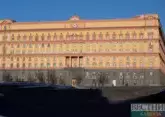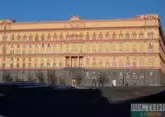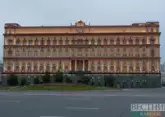Russia’s Federal Security Service has released the draft presidential decree on the state border policy. It is published on the website of the department.
The draft decree clarifies the country’s national interests and substantially increases the list of potential threats. The draft decree, which is an amendment of the document approved by first President Boris Yeltsin on October 5, 1996, focuses on a new geopolitical situation, where Russia is exposed to international terrorism and separatism, and implications of destabilization in border areas.
The objectives of Russia's state border policy, according to the draft, are the protection of national interests in the border area, as well as the creation of favorable conditions for the social and economic development of the border area of the Russian Federation.
The document also defines main tasks of the state border policy: identification and neutralization of threats to the sovereignty of Russia's territorial integrity; maintenance of administrative and legal regimes established on the Russian state border and its border area; prevention of armed conflicts and border incidents on Russia's state border; ensuring the protection of the interests and security of Russian citizens, state and public organizations in the border area of Russia, and a number of others.
External factors are forcing Russia to change the tactics both in the legal and socio-political sense, since the country fears territorial claims "by a number of foreign states" and attempted infiltration of the country by terrorists and extremists, the document explains.
Also, there are "pockets of socio-political and military tensions" in the vicinity of its borders, which means risks of incidents in the area, as well as persisting factors of political destabilization due to unresolved social and economic issues, religious and ethnical factors and separatist exertions.
The Federal Security Service also warns of risks of economic and demographic expansion for certain regions "due to low population density and the level of social and economic development, as well as transport isolation."
The list of threats also includes attempts to plunder Russia's natural resources, activities of cross-border organized crime, illegal migration, smuggling of arms, ammunition and explosives, narcotic drugs and psychotropic substances, material and cultural values across the border.
The threats include risks of natural disasters, environmental disasters, epidemics and epizootics on the border territories of neighboring countries and the threat of their transfer to the territory of Russia; activation of neighboring countries and transnational companies in attempts to develop and use strategic resources of maritime areas to the detriment of Russia's national interests.
Now the border policy will be based on a "differentiated approach in the choice of forms and ways of implementing" of Russia's policy with neighboring countries, as well as within the CIS, the Union State, the Collective Security Treaty Organization, the Shanghai Cooperation Organization and the EEU.










